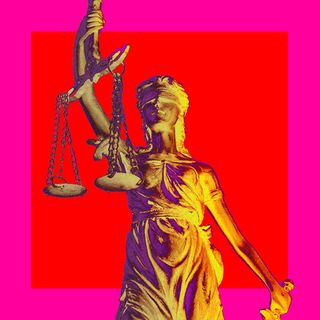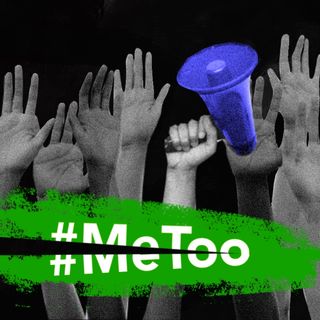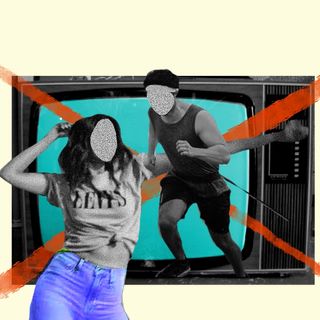
An Indian Cyclist’s Sexual Abuse Complaint Shows How Power Dynamics Operate Within Sports
The incident again shows how purveyors of knowledge create an atmosphere of fear and intimidation for women in sports.

An Indian cyclist recently filed a complaint with the Sports Authority of India (SAI), accusing the coach of sexual harassment in Slovenia last month. The cyclist, along with the contingent, was preparing for the Asian Track Cycling Championships scheduled for later this month. The complaint grimly details sexual advances and egregious statements by the chief coach R.K. Sharma.
The complaint states how the coach “forced” himself into her room, offered a “post-training massage,” asked her to “sleep with him,” and become “his wife” because she had no future in sports, according to a report in The Indian Express. As of now, the SAI and the Cycling Federation of India (CFI) have set up panels to probe the charges. The cyclist was flown back to India from Slovenia last week.
This is a narrative that needs no introduction: instances of misogynistic and predatorial behavior have played out in the arena of sports and other fields where the traditional systems of knowledge allow the mentor to take an exalted position. In July last year, seven athletes alleged sexual harassment by renowned sports coach P. Nagaraja, who already had a complaint filed against him. Nagarajan had reportedly abused the athletes — now in their 30s — for years and threatened to stop their training. Between 2010 and 2020, the SAI recorded 45 complaints of sexual harassment; 29 of these were filed against coaches, according to data gatheredfrom an RTI. There are many cases that are swept under the rug and are never documented due to fear of retribution. In 2018, several sports federations of India claimed there were “no complaints of sexual harassment,” according to a report in Scroll.
The alleged incident is telling of many things — chief among them how mentors, purveyors of knowledge and traditional wisdom, create an atmosphere of fear and intimidation by capitalizing on power structures.
The dynamic between the coach and the trainee is boldly skewed. Money, opportunity, age, and gender determine the experiences of young athletes. Institutional power also lies in the form of knowledge and experience that mentors wield in this teacher-student dynamic. In most cases since coaches and trainers are older men who bank on their prestige and experience, the gender power imbalance further renders the athletes vulnerable. As such, the athlete is devoid of power, feeding into a culture of impunity that surrounds any and all such complaints. There is a sanctuary to be found in courts and fields, one which also houses exploitation.
The delay in investigating these complaints further means that perpetrators of violence are let off the hook with bare minimum consequences. In January 2014, girls training at a center in Hisar accused their coach (who already had multiple charges of misconduct against him) of groping and kissing them under the pretext of celebrating “World Kiss Day.” The SAI found the coach guilty — three years later. By then, he had retired and the punishment amounted to cutting 10% from his pension for one year. The RTI data also showed the accused coaches have been released with punishments ranging from transfers to a small cut in their pay, while in others the investigations are still pending. These coaches are guru-like figures, holding on to the protection of their experience as a way to be let off the hook.
Related on The Swaddle:
Women Athletes Faced ‘Disturbing Level’ of Online Abuse During Tokyo Olympics: Survey
We have seen this story play out indiscriminately. Films, classical music, law firms, corporates, and media similarly safeguard people holding positions of seniority. This is a culture where toxic and archaic patriarchy holds sway at the cost of exploiting young professionals, further creating cultures of fear and silence.
The harassment and exploitation of athletes must also be viewed through the lens of gender. In many cases, experts note how the athletes feel compelled to withdraw their complaints or change their statements. The abuse and violence co-exist with the fear of their professional futures. A 2015 study by criminologist, Tine Vertommen, found a staggering degree of interpersonal violence in Belgium and the Netherlands: 14% of the surveyed participants (about 4,000 of them) had experienced sexual violence). 17% of the female respondents were among this group.
“Most of these girls come from humble backgrounds. So they are persuaded or pressurized to change their statement or take back their complaints,” Jiji Thomson, who was the director-general of the SAI from March 2013 to January 2015, told the Indian Express. “The girls give in to the fact that their future in sports, which for many is a way out of poverty, is in the hands of the coaches. So they often give up.”
The athletes who complained against Nagarajan noted several instances of abuse thatplayed out under the garb of “mentorship.” They would be asked to come for “personal coaching,” which would isolate them from the rest of the group. Even in the present case, the abuse, couched as misogynistic comments regarding the woman’s career, betrays the gender and traditional power dynamics. What is jarring is how the pursuit of training and expertise becomes dwarfed by concerns of personal safety and financial limitations.
What remains amiss is a larger awareness of legal measures the athletes can approach. Experts have noted how the challenges in reporting sexual harassment remain the primary reason #MeToo hasn’t hit Indian sports yet. The law dictates that sports facilities do count as workplaces under the ambit of the Sexual Harassment of Women at Workplace (Prevention, Prohibition and Redressal) Act of 2013. The statutealso demands that Internal Complaints Committees be adequately formed and placed in an accessible manner within the system. Implementation, though, remains thin.
Saumya Kalia is an Associate Editor at The Swaddle. Her journalism and writing explore issues of social justice, digital sub-cultures, media ecosystem, literature, and memory as they cut across socio-cultural periods. You can reach her at @Saumya_Kalia.
Related


The Johnny Depp Defamation Verdict Becomes a Precedent for Survivors To Not Speak Up
